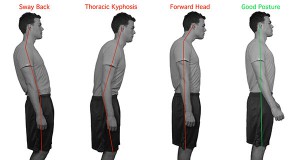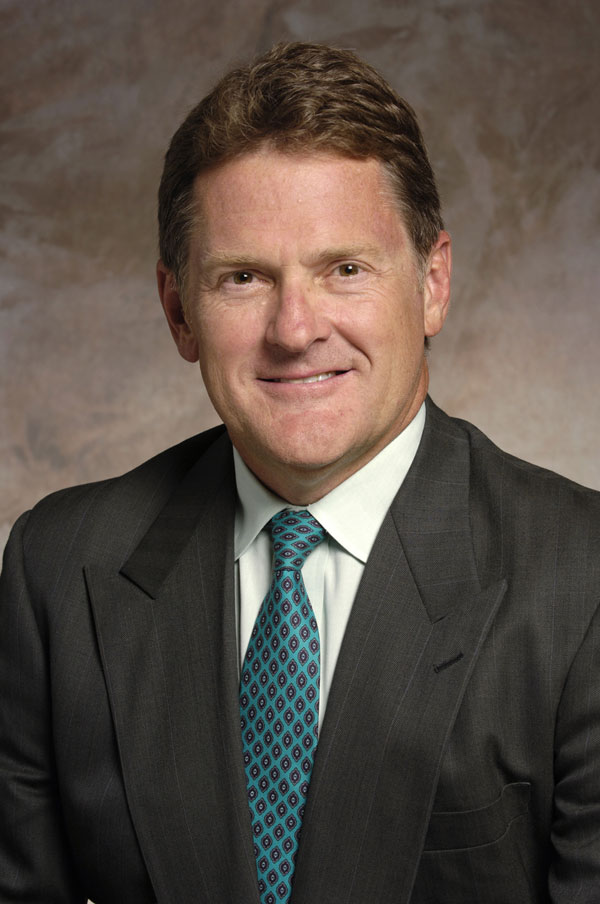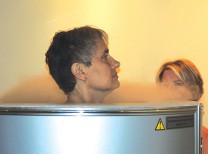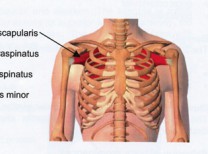
Recognizing your position is the first step in preventative care.
Low back pain is a very common health problem for 60 to 70 percent of people, according to the World Health Organization. Studies suggest the highest incidence of low back pain starts when patients are in their 30s and increases until the age of 60-65.
The 2010 Global Burden of Disease Study estimated that low back pain was among the top 10 diseases and injuries1 and the leading cause of activity limitation and absence from work, causing a high economic burden for individuals and families.2
Neck pain is another common problem affecting two-thirds of the population at some point in their lives.3 While many studies link traditional desk and technical jobs to chronic neck and back pain, advancement in technology and prolonged use of personal computers and tablets are further adding to the problem. It has been well demonstrated that the gravitational demand on the neck is 3-5 times greater during tablet computer use compared to a neutral posture of the neck due to flexing and forward tilt.4
Perpetual slouching of the head, neck and back can result in musculoskeletal sprain and strain (common causes of neck and back pain), and furthermore, can contribute to progressive deformity of the spine.
Maintaining proper body posture is one of the first and most important steps in the prevention and treatment of neck and back pain.
One way to check your posture is to stand sideways in front of a mirror with your chin held parallel to the floor and visualize a straight line going through your earlobe, shoulders, the center of your hip, and through your ankles. Imagine a string pulling the top of your head toward the ceiling. When sitting, choose a chair with a straight back and let your shoulders rest against the back of the chair with your upper back straight. When using a computer or iPad, ensure proper distance and angle between your eyes and the screen so that you are maintaining proper posture and not bending or thrusting your neck or back forward.
The best way to maintain proper posture is to constantly check yourself – or ask your family and friends to keep you in check – which can result in behavioral modification. Alternatively, there are electronic wearable devices that help users maintain a desired posture with a simple electronic alert mechanism.
Lastly, it is important to note that not all back and neck pain is due to poor posture. With persistent neck and back pain, it is crucial to seek the evaluation of a health care provider as the differential diagnosis of neck and back pain is quite extensive and requires expert evaluation. Multidisciplinary evaluation is beneficial for proper diagnosis and a prompt, effective treatment plan. The good news is that of the hundreds of patients we see, only a small fraction require surgical intervention, and most are managed with appropriate conservative measures.
Dr. Limonadi is a neurosurgeon with Desert Spine & Neurological in Rancho Mirage and can be reached at (760) 837.8020.
References: 1) Years lived with disability (YLDs) for 1160 sequelae of 289 diseases and injuries 1990-2010: a systematic analysis for the Global Burden of Disease Study 2010. Lancet, 2012, 380(9859):2163-96. doi: 10.1016/S0140-6736(12)61729-2. Erratum in: Lancet, 2013, 381(9867):628. Al Mazroa, Mohammad A.; 2) Andersson GBJ. The Epidemiology of Spinal Disorders. In Frymoyer JW (ed.) The Adult Spine: Principles and Practice. Philadelphia, Lippincott-Raven, 1997, pp. 93–141; 3) Binder AI (2007). “Cervical spondylosis and neck pain”. BMJ 334 (7592): 527–31. doi:10.1136/bmj.39127.608299.80. PMC 1819511. PMID 17347239; 4) Ergonomics. 2015 Feb 2:1-15. [Epub ahead of print] Vasavada AN1, Nevins DD, Monda SM, Hughes E, Lin DC.













































Comments (1)
Really helpful article. I found the Electronic Posture Aid on amazon very useful for maintaining back and neck posture.